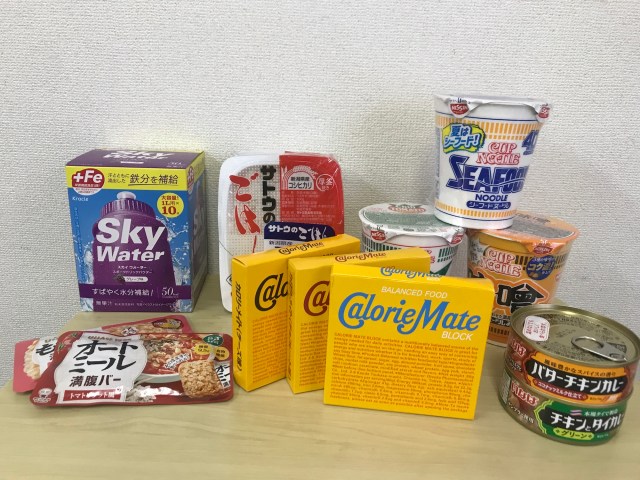
Learn how our writer fared after eating emergency rations, as well as her suggestions for anyone who’s making their own disaster food prep pack.
With the omnipresent threat of earthquakes, tsunami, typhoons, and Godzilla, Japan is no stranger to natural (or man-made, in the case of Godzilla) disasters. While buildings across the country are constructed to withstand a certain of amount of force and communities have designated areas of refuge, on the individual level, it’s a good idea to always have a disaster preparedness kit on hand in the event of a calamity.
Our Japanese-language reporter Mariko Ohanabatake received an idea from a reader to see what it would be like to survive on nothing but food one might eat in the event of a disaster when no electricity or running water is available to use. She figured that she was long overdue to reevaluate her own disaster-prep practices anyway, and so volunteered to try a sort of at-home experiment in which she simulated such a situation for three days. While she would still have all the comforts and conveniences of home, she vowed to consume nothing but foods and liquids that she stockpiled ahead of time based on recommendations from Japan’s Ministry of Agriculture, Forestry, and Fisheries.
When shopping for supplies, Mariko intentionally sought out both foodstuffs that would need a little bit of preparation as well as ones that could be eaten as is. She would use her small, portable gas stove for heating things up when necessary.
▼ Sample foods that are recommended to have on hand in the event of an emergency
She had also read that it’s important to prepare at least one liter (33.8 ounces) of potable water or fluids per day. Refrigeration wouldn’t be available in a time of disaster, so she made sure to buy beverages that are OK to drink at room temperature. Since it’s impossible to predict how many days you might find yourself stuck in a dire situation, she recommends having several liters of water on hand.
Besides consumable items, Mariko also gathered the following utensils and supplies. They were mainly things that wouldn’t need to be washed after use:
● Paper bowls
● Disposable chopsticks
● Forks, spoons
● Plastic wrap
● Alcohol wipes
▼ Don’t forget to buy items that are needed to actually eat your food!
With that, she was ready to begin her three-day disaster eating simulation.
Day 1
For her late breakfast/lunch on the first day, Mariko decided to boil some water on the gas stove in order to eat a Cup Noodle (her choice: Nissin’s seafood-flavored Cup Noodle).
Since water and gas would be precious in a real emergency, the alcohol wipes were a good way to clean the pot and stove ahead of use.
Mariko hadn’t used her gas stove much prior to this experiment, and she struggled a bit while figuring out how to insert the gas cylinder. She recommends practicing this potentially tricky step well ahead of time.
Once ready, she poured the hot water into the cup and waited the usual three minutes for the noodles to be ready. They sure hit the spot, especially after such an unusual morning of not eating her regular breakfast foods. Since she didn’t want to waste any of the broth, she drank it all up–but then became a bit thirsty from all of the salt.
It also occurred to her to check the expiration date of the noodles that she had purchased. She was a bit shocked because they were only good for about half a year. That was a much shorter duration than she was expecting…
For dinner that evening, Mariko would eat a package of cooked white rice and canned Thai curry (Inaba brand).
Her only way to heat them up was in hot water, so she again readied the stove and plopped both of them in. While the packaged rice usually takes only two minutes to heat up in the microwave, it took about 15 minutes to be ready on the gas stove. Consequently, it used more gas than she anticipated, and the room kept getting hotter and hotter–something that would be welcome in the middle of winter, but not so much in a summer emergency. All of the above seemed like important mental notes for her to make.
It was also tricky to remove the items since they were so hot to the touch.
In order to conserve bowls, she poured the curry little by little directly on top of the rice and ate it like that. It was slightly oily, which bothered her stomach a little bit later, so please take note if you’re someone who has a sensitive stomach.
Otherwise, the curry’s taste was to her usual liking–spicy and flavorful. However, that again caused her to become extra thirsty and come dangerously close to using up her daily allotment of water. She realized that eating foods like instant cup noodles and canned curry during a time of disaster would likely be a double-edged sword. Yes, preservatives were necessary to stock foods for a long period of time, but as a result, she would want to stock more liquids than she originally planned. This thought was only something that Mariko could have realized by actually simulating such a plan like she was now doing.
Day 2
For her second day, Mariko decided to take things up a notch by eating only cooked, dehydrated rice (called “alpha-mai” in Japanese), which can be reconstituted with water. She decided to test out a packet from Onisi Foods’ handheld onigiri series. All she had to do was pour hot water directly into the packet and wait 15 minutes. This would be her breakfast.
Upon her first bite of the rehydrated onigiri, she was shook. It was ten times more delicious than she had expected! It really tasted like an onigiri made from freshly cooked rice.
For lunch, she wanted to see what the reconstitution process would be like if she used room-temperature water. That method ended up taking a whopping 60 minutes to be ready, so she made another mental note to start prepping early if she didn’t have a way to heat up water in a real disaster.
The onigiri itself was still delicious when made using room-temperature water. It tasted like one she might buy at a convenience store.
While the rice was reasonably filling and she had thought that three of them would be enough, she was still a bit hungry in the end. That’s why she decided to break open a Calorie Mate “balanced food block” bar and a Mochimugi Manpuku (“pearl barley full stomach”) Bar. Unfortunately, the latter wasn’t to her taste.
Day 3
On the third day, Mariko decided to take things to the extreme by eating as if she were staying in an evacuation shelter with no access to a gas stove or hot water. Levain crackers are a convenient choice for emergency rations in this kind of environment, and she determined that one tin of them should last her the day.
In fact, this tin can-style is purposely made for emergency rations and is divided into smaller portions than the boxed versions sold at supermarkets. This one came with six individual packages.
She divided the entire tin into breakfast, lunch, and dinner portions, allotting two packets for each meal.
The simple verdict? She was still really hungry at the end of the day.
Mariko was certainly relieved that she could go back to her regular eating habits at the conclusion of her experiment. However, it was also important for her to reflect on the experience as a whole and the things that she would change for her own disaster food prep pack. As a result, she would like to share three main pieces of wisdom with readers.
First, the quality and options for her meals were hugely impacted based on whether she used the portable gas stove for heating water. She recommends buying one along with a few gas cannisters now if you live in Japan and don’t currently have one.
Second, she had never realized that food expiration dates vary wildly from item to item. Cup Noodle packs, Calorie Mate bars, and cooked rice packages are all good for about four-to-six months, which is considerably shorter than she expected. Therefore, it would be a good idea to set a calendar reminder for yourself to replace certain stock every half year or so (luckily, Cup Noodle maker Nissin has actually got you covered there).
If that’s too much of a bother for you, the tinned curry and dehydrated rice are usually good for about five years.
▼ The label says that the curry can be enjoyed even without being heated up.
Finally, since Mariko was still hungry after eating the rehydrated rice and crackers, she recommends stocking up on more of them than you might initially think. She personally liked the onigiri the best and would probably want to make those the main staple of her emergency food diet.
The bottom line is that it’s always a smart idea to sample foods and simulate prepping them ahead of time so that you don’t find yourself in a pinch during a real disaster. On a final note, we might also recommend making the ultimate emergency preparedness rice that’s said to last up to 20 years using an ancient Japanese recipe.
Reference: Ministry of Agriculture, Forestry, and Fisheries
All images © SoraNews24
● Want to hear about SoraNews24’s latest articles as soon as they’re published? Follow us on Facebook and Twitter!
[ Read in Japanese ]

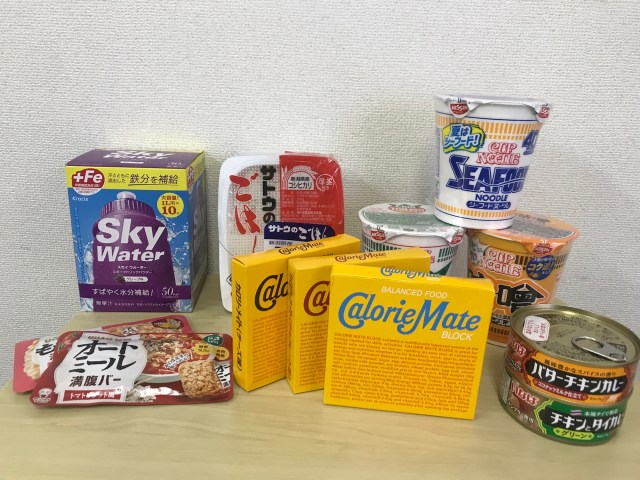
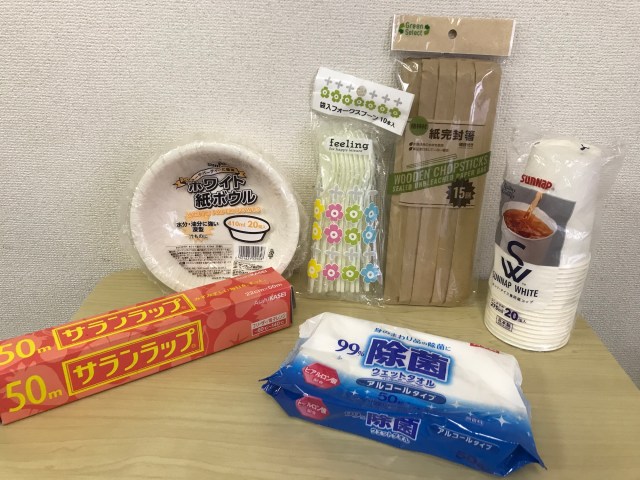
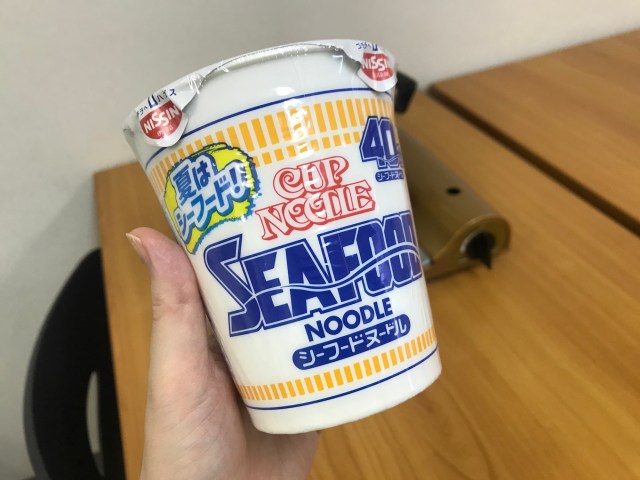
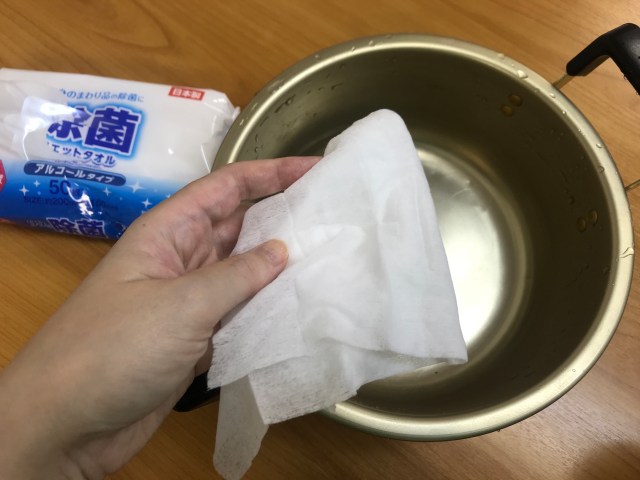
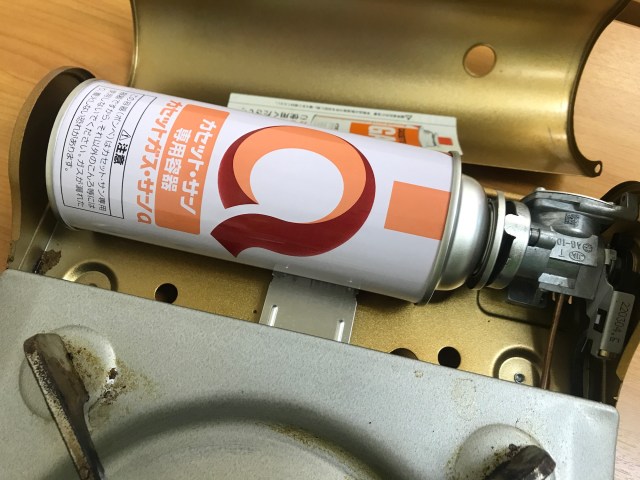
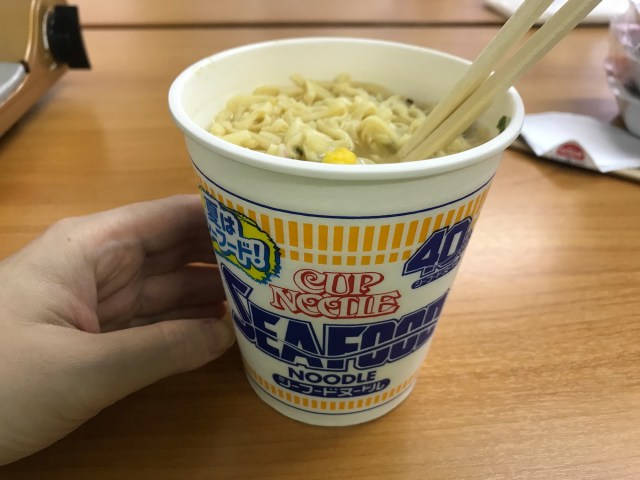
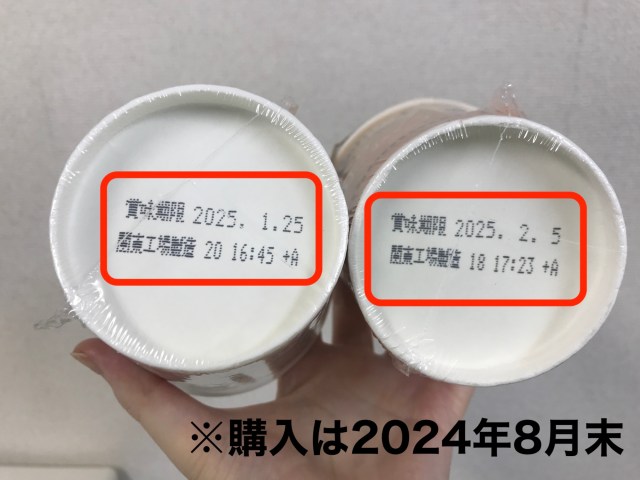
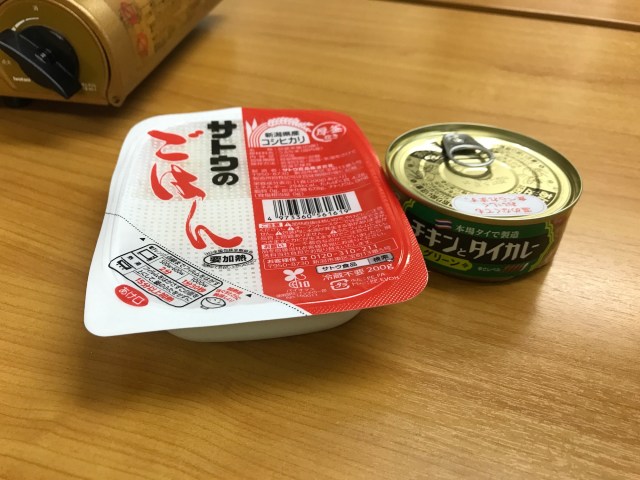
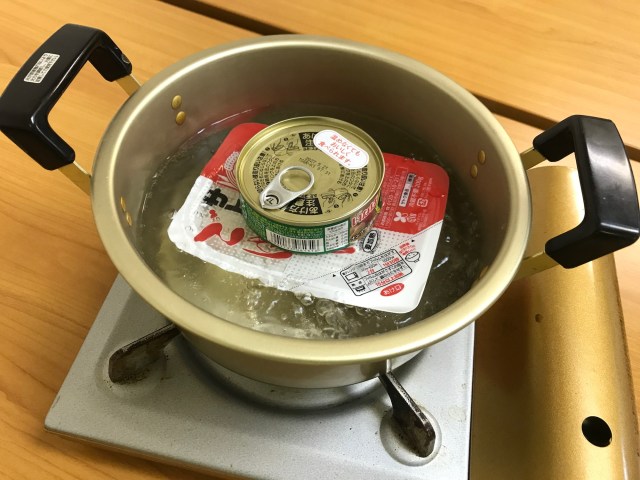
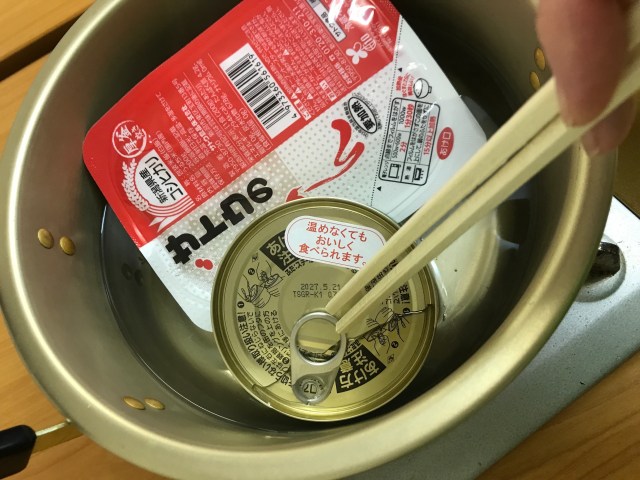
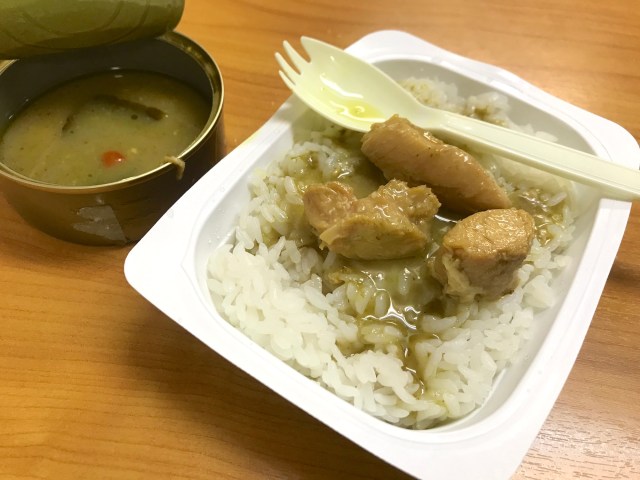
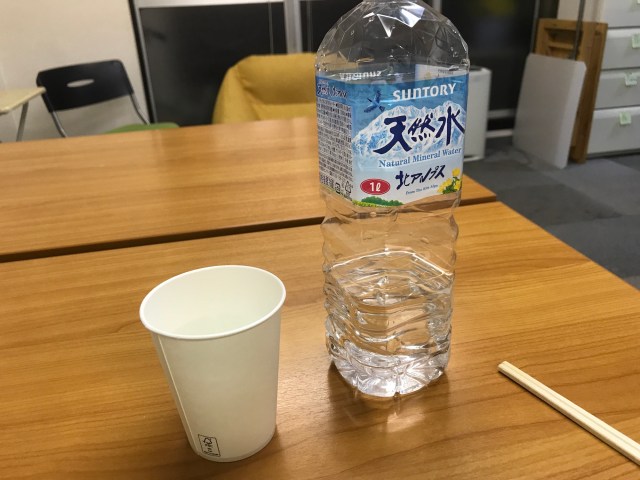
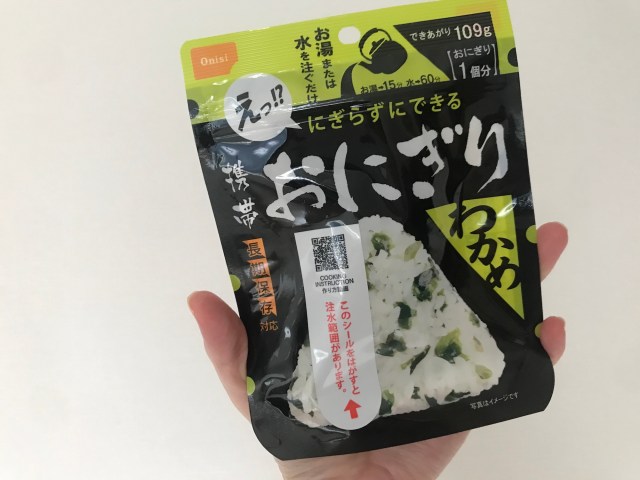
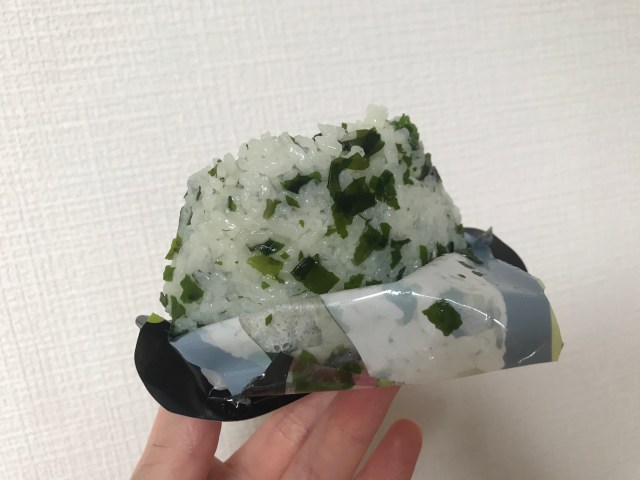
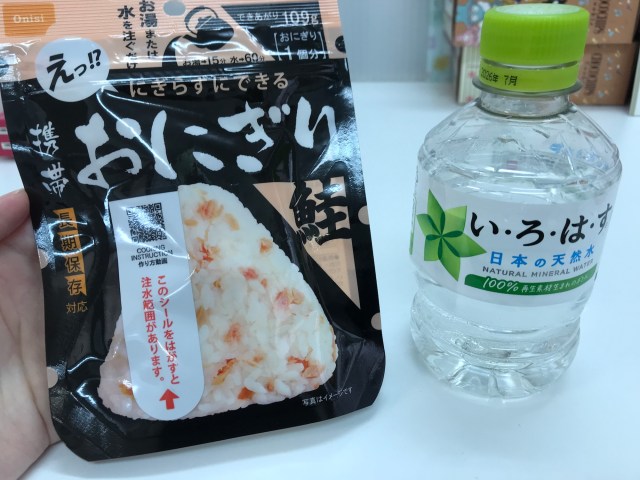
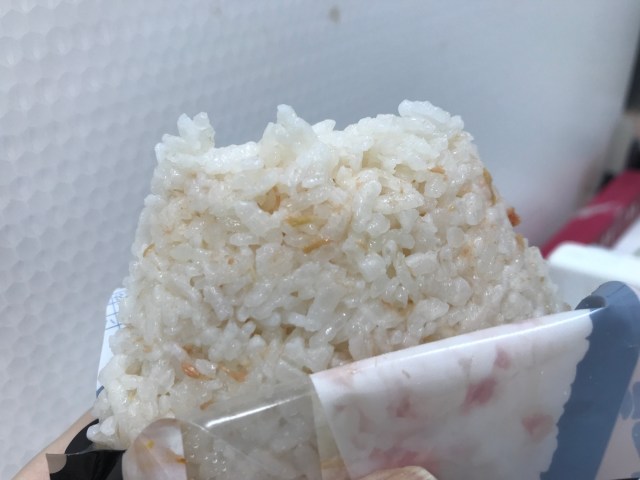
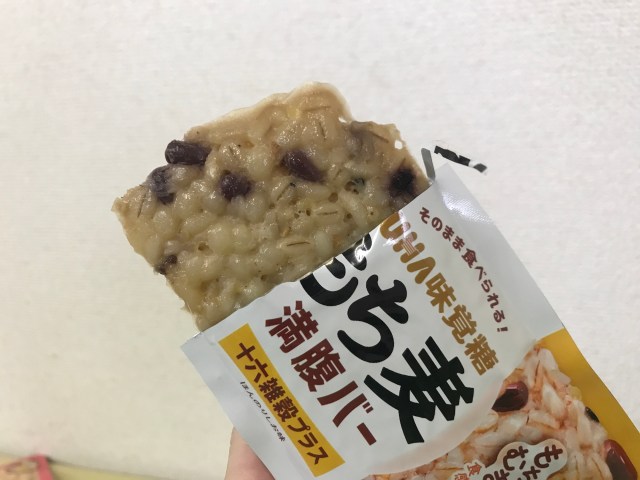
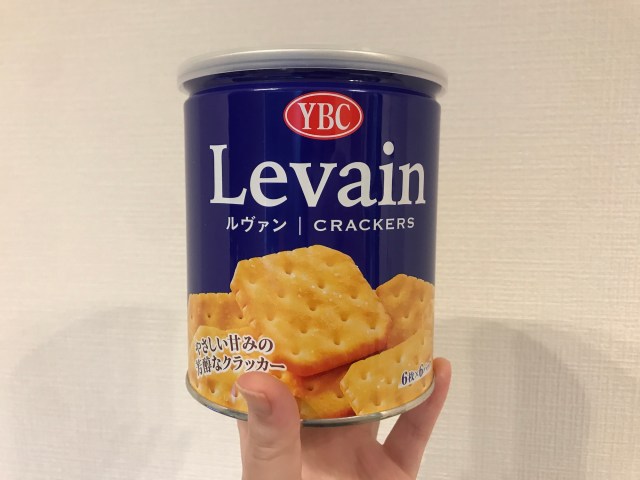
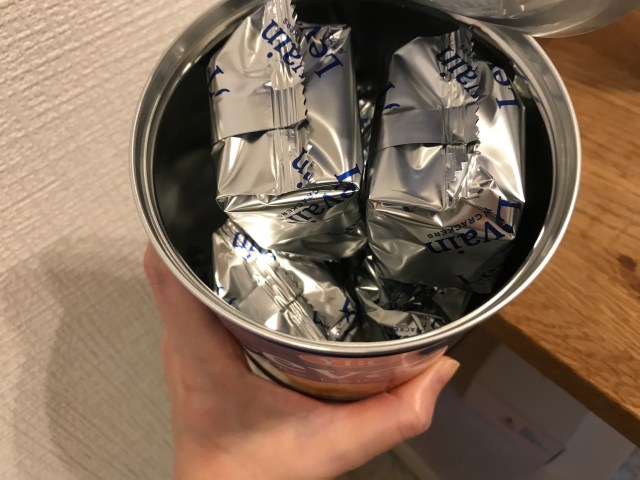
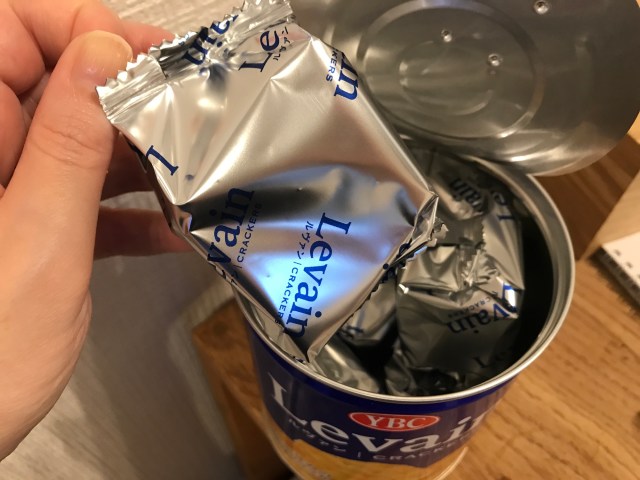
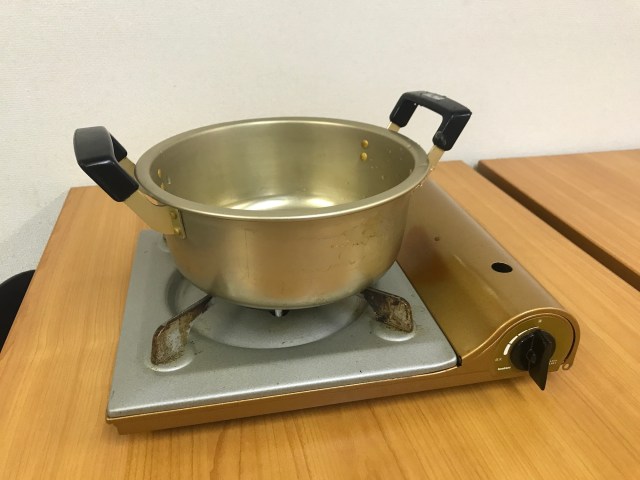
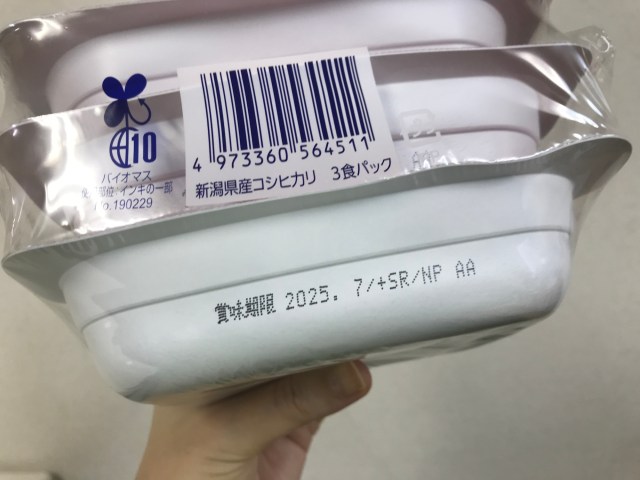
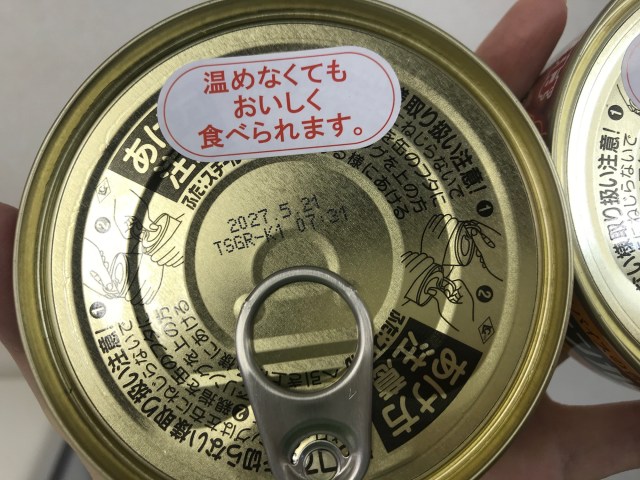
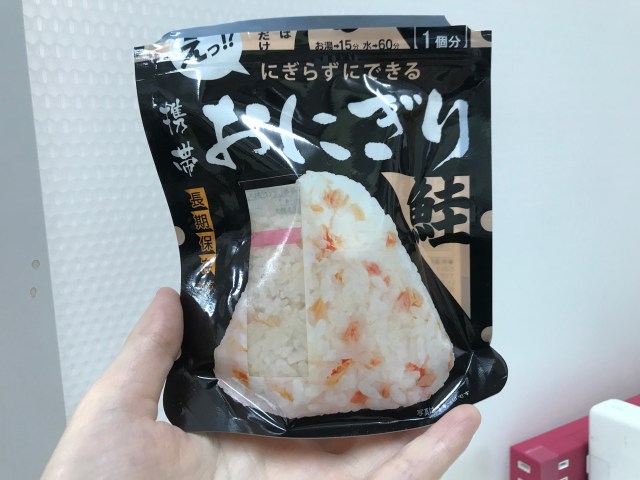
 Do we say yay or nay to the additive-free rice balls that can last 100 days at room temperature?
Do we say yay or nay to the additive-free rice balls that can last 100 days at room temperature? Official Evangelion emergency rations, with curry and beef bowls, are now on sale【Photos】
Official Evangelion emergency rations, with curry and beef bowls, are now on sale【Photos】 Japanese home center emergency evacuation set could save your life, make you look like a goldfish
Japanese home center emergency evacuation set could save your life, make you look like a goldfish 3.11 survivors share what items they really needed during the aftermath of the disaster
3.11 survivors share what items they really needed during the aftermath of the disaster Let’s eat some official Evangelion emergency rations!【Taste test】
Let’s eat some official Evangelion emergency rations!【Taste test】 New adults go wild at Seijinshiki Coming-of-Age ceremony in Kitakyushu, Japan 【Photos】
New adults go wild at Seijinshiki Coming-of-Age ceremony in Kitakyushu, Japan 【Photos】 Man arrested for violating Japan’s anti-dueling law in downtown Tokyo
Man arrested for violating Japan’s anti-dueling law in downtown Tokyo Studio Ghibli’s kodama ready to leave the Princess Mononoke forest as a squeezable keychain【Pics】
Studio Ghibli’s kodama ready to leave the Princess Mononoke forest as a squeezable keychain【Pics】 Starbucks Japan releases new Frappuccino and latte for Valentine’s Day
Starbucks Japan releases new Frappuccino and latte for Valentine’s Day Ramen restaurant’s English menu prices are nearly double its Japanese ones, denies discriminating
Ramen restaurant’s English menu prices are nearly double its Japanese ones, denies discriminating What’s inside Starbucks Japan’s fukubukuro lucky bag for 2026?
What’s inside Starbucks Japan’s fukubukuro lucky bag for 2026? We ate sushi made from Japan’s most expensive tuna ever【Taste test】
We ate sushi made from Japan’s most expensive tuna ever【Taste test】 Studio Ghibli re-releasing all past theatrical posters and program booklets
Studio Ghibli re-releasing all past theatrical posters and program booklets Does this video about an abandoned dog leave you wiping your eyes or shaking your fist?
Does this video about an abandoned dog leave you wiping your eyes or shaking your fist? The top five best multiple-hot-spring hotels in all of Japan
The top five best multiple-hot-spring hotels in all of Japan 10 times to avoid traveling in Japan in 2026
10 times to avoid traveling in Japan in 2026 Our 52-year-old pole dancing reporter shares his tips for achieving your New Year’s exercise goal
Our 52-year-old pole dancing reporter shares his tips for achieving your New Year’s exercise goal Japanese beef bowl chain Sukiya’s 2026 Smile Box lucky bag basically pays for itself
Japanese beef bowl chain Sukiya’s 2026 Smile Box lucky bag basically pays for itself Top Japanese cosplayer Enako returns to Comiket after 6 years, creates mayhem with admirers
Top Japanese cosplayer Enako returns to Comiket after 6 years, creates mayhem with admirers Umamusume anime girl plushie recalled for having parts she absolutely should not have【Pics】
Umamusume anime girl plushie recalled for having parts she absolutely should not have【Pics】 Princess Mononoke magnets return just in time to treat yourself to awesome anime decorations
Princess Mononoke magnets return just in time to treat yourself to awesome anime decorations Giant hotel rooms in Osaka reflect the new non-niche face of travel in Japan.
Giant hotel rooms in Osaka reflect the new non-niche face of travel in Japan. Starbucks Japan ready to get Year of the Horse started with adorable drinkware and plushies【Pics】
Starbucks Japan ready to get Year of the Horse started with adorable drinkware and plushies【Pics】 7-Eleven Japan starts new temporary luggage storage service in over 300 branches
7-Eleven Japan starts new temporary luggage storage service in over 300 branches Disillusionment at Tsukiji’s tourist-target prices led us to a great ramen restaurant in Tokyo
Disillusionment at Tsukiji’s tourist-target prices led us to a great ramen restaurant in Tokyo Starbucks teams up with 166-year-old Kyoto doll maker for Year of the Horse decorations【Photos】
Starbucks teams up with 166-year-old Kyoto doll maker for Year of the Horse decorations【Photos】 Tokyo’s Tsukiji sushi neighborhood asks tour groups to stay away for the rest of the month
Tokyo’s Tsukiji sushi neighborhood asks tour groups to stay away for the rest of the month Japan may add Japanese language proficiency, lifestyle classes to permanent foreign resident requirements
Japan may add Japanese language proficiency, lifestyle classes to permanent foreign resident requirements Lacquerware supplier to emperor of Japan and Pokémon team up for new tableware
Lacquerware supplier to emperor of Japan and Pokémon team up for new tableware Survey asks foreign tourists what bothered them in Japan, more than half gave same answer
Survey asks foreign tourists what bothered them in Japan, more than half gave same answer Japan’s human washing machines will go on sale to general public, demos to be held in Tokyo
Japan’s human washing machines will go on sale to general public, demos to be held in Tokyo We deeply regret going into this tunnel on our walk in the mountains of Japan
We deeply regret going into this tunnel on our walk in the mountains of Japan Studio Ghibli releases Kodama forest spirits from Princess Mononoke to light up your home
Studio Ghibli releases Kodama forest spirits from Princess Mononoke to light up your home Major Japanese hotel chain says reservations via overseas booking sites may not be valid
Major Japanese hotel chain says reservations via overseas booking sites may not be valid Put sesame oil in your coffee? Japanese maker says it’s the best way to start your day【Taste test】
Put sesame oil in your coffee? Japanese maker says it’s the best way to start your day【Taste test】 No more using real katana for tourism activities, Japan’s National Police Agency says
No more using real katana for tourism activities, Japan’s National Police Agency says Starbucks Japan reveals new sakura drinkware collection, inspired by evening cherry blossoms
Starbucks Japan reveals new sakura drinkware collection, inspired by evening cherry blossoms Updated cherry blossom forecast shows extra-long sakura season for Japan this year
Updated cherry blossom forecast shows extra-long sakura season for Japan this year Human washing machine pods coming to Japanese hotels【Photos】
Human washing machine pods coming to Japanese hotels【Photos】 These little-known Japanese plastic bags can be a lifesaver in times of disaster
These little-known Japanese plastic bags can be a lifesaver in times of disaster Rice balls that can last for 100 days at room temperature? Kyoto company makes high-protein onigiri
Rice balls that can last for 100 days at room temperature? Kyoto company makes high-protein onigiri We retreat for a day of rejuvenation at Green Hill Yatsugatake recreation facility in Yamanashi
We retreat for a day of rejuvenation at Green Hill Yatsugatake recreation facility in Yamanashi Japanese beef bowl chain Yoshinoya releases new canned, ready-to-eat rice bowls 【Taste Test】
Japanese beef bowl chain Yoshinoya releases new canned, ready-to-eat rice bowls 【Taste Test】 We try out “instant rice balls”, prepared with water, to see if they’re actually tasty
We try out “instant rice balls”, prepared with water, to see if they’re actually tasty Curry for babies? Spending a whole day eating nothing but Japanese baby food【Taste tests】
Curry for babies? Spending a whole day eating nothing but Japanese baby food【Taste tests】 The unusual and surprising ways people in Nagasaki celebrate Obon, the festival of spirits
The unusual and surprising ways people in Nagasaki celebrate Obon, the festival of spirits This Japanese cafe for stuffed animals is a sweet day out for nuikatsu fans
This Japanese cafe for stuffed animals is a sweet day out for nuikatsu fans Can you make instant udon noodles with room-temperature water? We find out
Can you make instant udon noodles with room-temperature water? We find out Is this the rudest parfait in all of Japan?
Is this the rudest parfait in all of Japan? This lucky bag stuffed with green tea made us feel like real adults for once
This lucky bag stuffed with green tea made us feel like real adults for once Space Onigiri: Do these long-lasting Japanese rice balls taste any good on planet Earth?
Space Onigiri: Do these long-lasting Japanese rice balls taste any good on planet Earth? Our reporter orders food from Uber Eats, falls in love, learns that fate works in mysterious ways
Our reporter orders food from Uber Eats, falls in love, learns that fate works in mysterious ways We try out writing inks inspired by Nagasaki ramen and dessert
We try out writing inks inspired by Nagasaki ramen and dessert Mountain meshi hiking! Our guide takes us to the top of Izugatake for an unforgettable lunch【Pics】
Mountain meshi hiking! Our guide takes us to the top of Izugatake for an unforgettable lunch【Pics】 You need this instant Japanese curry rice if you hate cooking but want to eat a balanced diet
You need this instant Japanese curry rice if you hate cooking but want to eat a balanced diet We try eating, and also try to eat, a shark burger and deep sea fish burger【Taste test?】
We try eating, and also try to eat, a shark burger and deep sea fish burger【Taste test?】
Leave a Reply